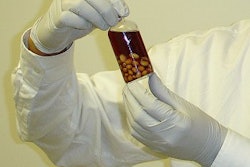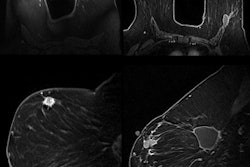Researchers have demonstrated the ability to harness powerful radioactive particles and direct them toward small cancer tumors using gold-plated nanoparticles, according to an article published online January 18 in PLOS One.
A team of researchers from the University of Missouri, Oak Ridge National Laboratory, and the University of Tennessee developed a multilayered gold-coated lanthanide phosphate nanoparticle that contains actinium at its core. Adding four layers of material and then coating the nanoparticle with gold made it strong enough to hold the actinium and other alpha emitters long enough for any alpha particles to destroy nearby cancer cells (PLOS One, January 18, 2013, Vol. 8:1, e54531).
The element actinium is known as an alpha emitter, meaning that it produces alpha particles. As it decays, actinium creates three additional elements that produce alpha particles; due to the strength of these particles, keeping the elements in place at cancer sites was previously not possible.
The new nanoparticle was designed by J. David Robertson, PhD, associate director of research and education at the University of Missouri Research Reactor, and doctoral candidate Mark McLaughlin.
The nanoparticle design is able to contain more than 80% of the element inside the nanoparticle during a 24-hour period, Robertson said. Holding alpha emitters in place has been a technical challenge for researchers for 15 years.
Basic research has established that scientists can attach antibodies onto gold nanoparticles that help drive the nanoparticles to the tumor sites in the body, he said. When nanoparticles get close to cancer cells, the alpha particles they contain move out and destroy cancer cells more effectively than current radiation therapy options.
The early-stage results of the research are promising, according to the group, and if additional studies are successful over the next few years, University of Missouri officials will request authority from the federal government to initiate human drug development.



















